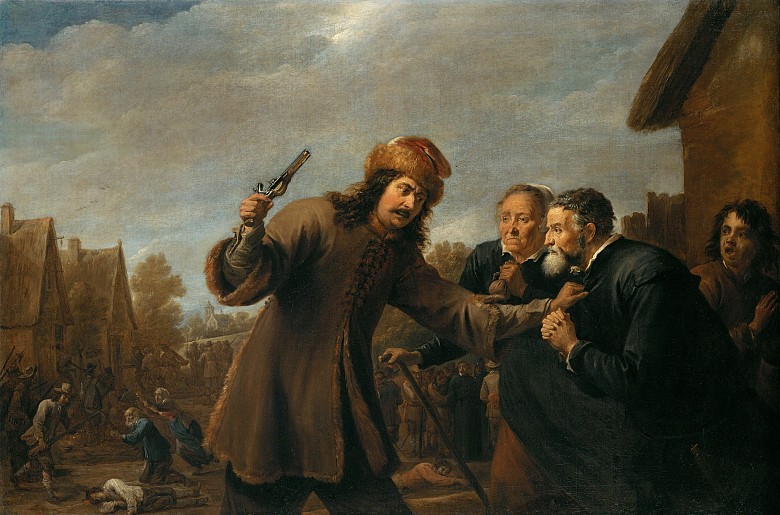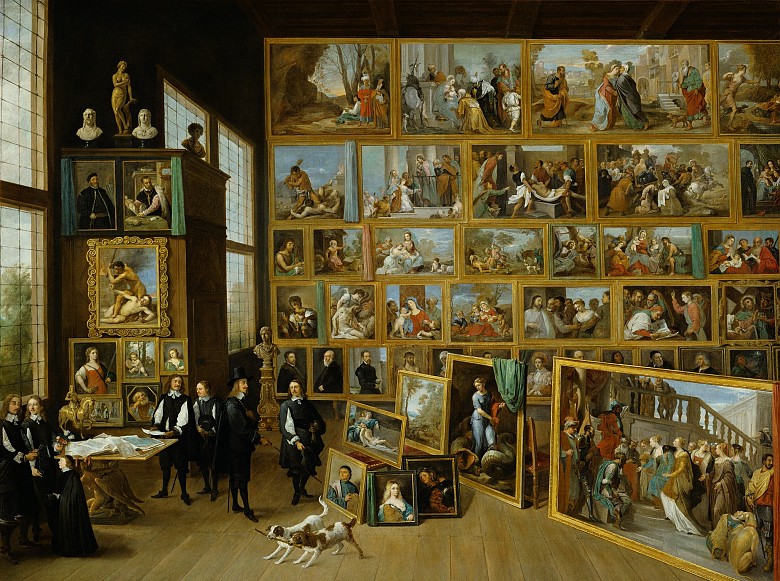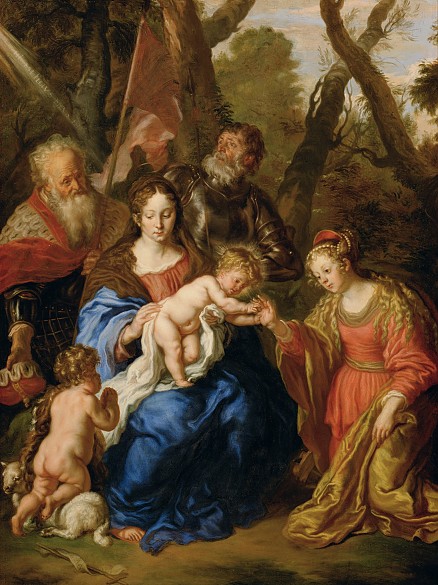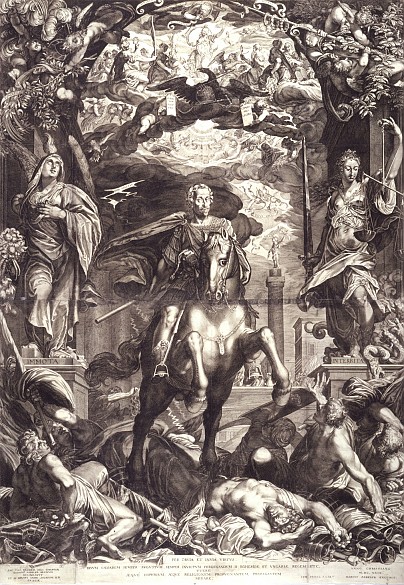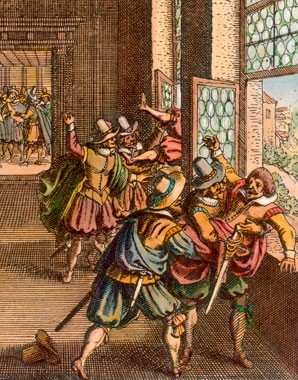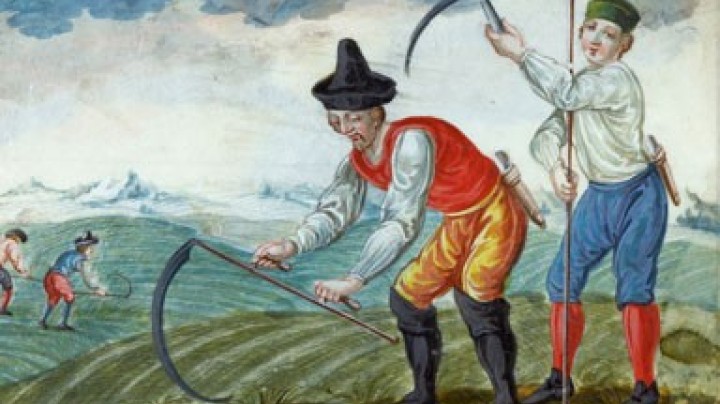Art and the Thirty Years’ War
For large parts of Central Europe, the Thirty Years’ War was a catastrophe which also brought about a decline in the arts. Nonetheless, it was a time which saw an unprecedented flowering of German literature.
The artist and art historian Joachim von Sandrart fled from the wars several times. losing his fortune in the process. In his treatise Teutsche Academie der Edlen Bau-, Bild- und Mahlerey-Künste he describes the fate of artists in times of war.Time and again, Queen Germania saw her palaces and churches with their magnificent paintings go up in flames, and her eyes were so dimmed by smoke and tears that no desire or strength remained to her to pay heed to this art, which now seemed to desire only to fall asleep in a long and eternal night. … It thus passed into oblivion, and those who made it their profession fell into poverty and contempt: they put away their palette and instead of the brush perforce took up a pike or beggar’s staff, and even gentle people were ashamed to prentice their children to such despised folk.
For many parts of the Holy Roman Empire the Thirty Years’ War had catastrophic consequences: economic crisis, devastation, mass deaths, depopulation and epidemics. Important cultural centres such as the court of Rudolf II at Prague were destroyed and the collections plundered and dispersed. After the wars many princes were no longer able to continue their patronage of the arts due to their precarious economic situation. Some artists sought work in other places, while Protestant artists were often expelled.
The artist and art historian Joachim von Sandrart fled from the wars several times. losing his fortune in the process. In his treatise Teutsche Academie der Edlen Bau-, Bild- und Mahlerey-Künste he describes the fate of artists in times of war.
Not all regions of Central Europe were affected by the wars to the same extent – painting in the Netherlands experienced a golden age and architecture boomed in Poland. In Germany literature prospered, with late humanist writings such as those of the Rosicrucians constructing utopias envisioning a better world. Based on the highly-developed tradition of copperplate engraving, publishing also flourished, bringing forth superb illustrated works in addition to popular pamphlets featuring a mixture of information and polemics. Language societies devoted themselves to the ‘purging of the German language’ and promoted German-language literature.
